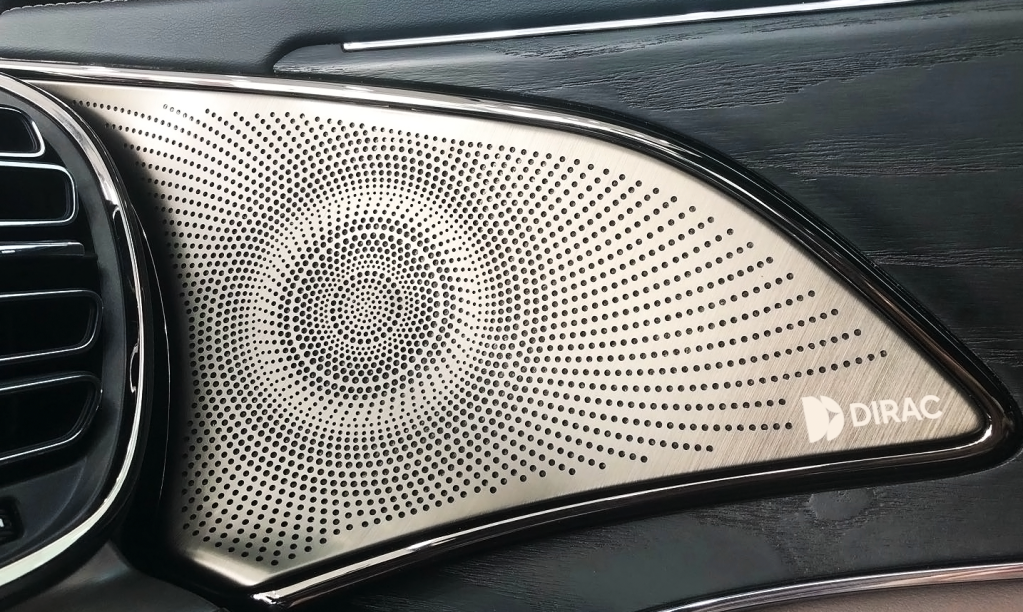The rise of U.S.-China tensions has accelerated the bifurcation of global technology, with the two superpowers each working on their own tech systems. While the rift might be discouraging cross-border investment and business expansion between the rivals, the countries that are in-between — like those in Southeast Asia and Europe — are still finding opportunities.
Sweden’s Dirac is such an example. The 15-year-old firm has been licensing sound optimization technology to mobile, home entertainment, AR/VR, automotive and other businesses where sounds are critical. The geopolitical complications “have not impacted” the company at all, its founder and chief executive Mathias Johansson told TechCrunch in an interview.
Based in the university city Uppsala of Sweden, Dirac has deep ties to China, offering solutions to the country’s smartphone leaders from Huawei, Oppo and Xiaomi to Africa-focused Transsion. More than 50% of its revenue comes from China today.
Dirac’s interest in China stems in part from the founder’s early fascination with the country. When Johansson visited China for the first time through his PhD program two decades ago, he was impressed by the “rapid evolution” in the tech industry there.
Southeast Asia’s East Ventures on female VCs, foreign investment, consolidation
“The audio industry put a lot of manufacturing in China first, but then more and more on development and design. We realized this is a market that’s absolutely key for the entire consumer electronics ecosystem,” Johansson said.
The entrepreneur had since been traveling to Asia, especially Japan and China where electronics were flourishing. In 2010, he hired Dirac’s first China manager Tony Ye, who previously worked for Swedish software firm IAR Systems in Shanghai. At the time, the revolutionary iPhone 4 was making waves across the world, but Johansson and his team were also bullish about China.
“We thought that China is going to be the leader in smartphones eventually. We thought that with Android and with Arm processors [China] is going to be a very different market. So we really went in there and focused on the market. And we thought that [the Chinese] would be more hungry, more interested in trying out new things, simply because they were newcomers just like we were pioneers,” the founder said.
“It turned out to be the right bet.”
Though the Chinese government has been advocating for technological autonomy, the national efforts are prioritizing strategic areas like 5G and AI. In smaller and less politically charged fields, imported technologies are still seeing demand. These solutions are often cutting-edge and built upon years of research and development, but they are too niched for big corporations to invest the money and time. That is true for certain video enhancement solutions (see TechCrunch’s profile of Imint, also an Uppsala-based company), or advanced sound optimization in the case of Dirac.
Imint is the Swedish firm that gives Chinese smartphones an edge in video production
Johansson began researching the audio technology behind Dirac some 20 years ago during university, which made it harder for latecomers to catch up, the founder asserted. Dirac fixes audio like how glasses correct vision. Its team first sends out a test signal through the target speaker system, records it with a microphone, generates a digital fingerprint of audio and measures the acoustic information. It then makes an exact “mirror universe” of the distortions created by the system, sends pre-distorted audio back to the speakers and the users will eventually get the distortion-free version of the sound.
The research and development cycle at Dirac is long, but working with Chinese companies has forced the Swedish firm to adapt.
“It challenged us to come up with new, more efficient ways of doing the same thing and to keep that innovation pace ahead of the competitor, whether it’s domestic Chinese, or the U.S., or wherever,” the founder admitted.
Dirac maintains its cashflow by licensing its intellectual property to clients and charges royalty fees per unit of device shipped. It also operates a B2B2C model, whereby the end-user can upgrade the sound system of a device, say, a speaker, by paying a fee, which is then divided between Dirac and its client, i.e. the device maker. Its latest big-name customer is the Chinese electric carmaker BYD, a deal that the company sees as an important step in furthering its automotive ambitions.
“Traditional carmakers are being challenged and the whole ecosystem is changing,” Johansson observed. “With software upgrades, cars are becoming something very different. They’re becoming much more like mobile phones and much more software-centric. The whole entertainment aspect and the audio experience in cars are becoming almost the most important part of the car because the noise is so low, the car is so quiet and you’re maybe driving a self-driving car. The audio experience you will get from cars will be outstanding in a couple of years.”































Comment